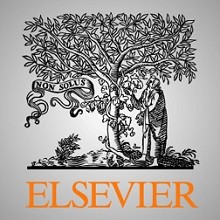
استفاده از روش های مدیریت پروژه و ابزار آن توسط NGDO ها
چکیده
مطالعه های مختلف در زمینه مدیریت پروژه به این جمع بندی رسیده اند که پروژه های توسعه که توسط سازمان های غیر دولتی اجرا می شود (NGO ها)دارای ویژگی های خاصی هستند که مرتبط با تنوع ذینفعان، کمبود منابع، و اهمیت اهداف نامحسوس میباشد. در نتیجه، روش های کلاسیک ممکن است برای این پروژه ها مناسب نباشد. هدف این مقاله، تحلیل ابزار مدیریت پروژه مورد استفاده سازمان های توسعه غیر دولتی (NGDO ها) و تاثیر آن بر روی عملکرد پروژه می باشد. این کار با مطالعه دیدگاه مدیران پروژه در NGDO های پرتغال، انجام شده است. یک طراحی روش ترکیبی در این مطالعه استفاده شده است. در فاز اولیه، یک پرسش نامه به NGDO های پرتغال ارسال شد. داده های به دست آمده با استفاده از تحلیل های مقایسه ای کیفی مجموعه های فازی (fsQCA) تحلیل شد. در گام دوم، مصاحبه های نیمه ساختار یافته نیز با یک گروه فرعی از مدیران پروژه از این سازمان ها انجام شد. نتایج نشان دهنده پروفایل های خاص در رابطه با اهمیت ابزار مدیریت پروژه و روش شناسی های مربوطه برای عملکرد NGDO ها می باشد. این نتایج نشان دهنده ویژگی های خاص این انواع از پروژه و سازمان ها می باشد.
1. مقدمه
کمک های توسعه در طول دهه های اخیر برای بهبود شرایط اقتصادی و اجتماعی در کشور های کمتر توسعه یافته، بیش از پیش رواج پیدا کرده اند (Ziesemer, 2016). تحقیقات، این کمک های توسعه را به صورت یک چشم انداز پیشرفت برای نواحی کمتر توسعه یافته از جهان از طریق کمک های مالی بین المللی و انتقال تکنولوژی های پیشرفته، تعریف می کند (Lewis, 2010; Riddell, 2007). این کمک ها شامل حوزه های مختلف می شود از جمله تحصیلات، بهداشت، خدمات اجتماعی و برنامه های اقتصادی (Michalopoulos, 2017). ازین رو، این کمک ها تعداد زیادی از ذینفعان را شامل می شود که شامل سازمان های خصوصی و عمومی مختلف می شود (Davis, 2014; Eichenauer & Reinsberg, 2017). در این زمینه، سازمان های توسعه غیر دولتی(NGDO ها) اهمیت بسیار زیادی در مدیریت بودجه و فرصت های این چنینی داشته اند (Fowler, 2016). اما به صورت کلی، نگرانی زیادی در رابطه با کارایی پول مورد استفاده این برنامه ها وجود دارد (Edwards & Hulme, 2014; Ziesemer, 2016). NGDO ها رقابت زیادی را از طریق سازمان های مختلف، پروژه ها و برنامه های دیگر پیش روی خودشان می بینند در حالی که ارائه دهنده های بودجه نیز در حال محدود کردن بودجه های خودشان هستند. این محدودیت باعث شده است که NGDO ها تحت موشکافی بیشتری از نظر کاربرد ضعیف بودجه ها و کارایی پایین شان قرار بگیرند و همچنین اهداف سازمانی ضعیف و یا شکست خورده آن ها نیز بیشتر به چشم می آید(Golini, Corti, & Landoni, 2017; Golini, Landoni, & Kalchschmidt, 2018).
Abstract
Several studies in the area of project management have concluded that development projects implemented by nongovernmental organizations (NGOs) have specific features associated with the diversity of stakeholders, the scarcity of resources, and the importance of intangible objectives. Consequently, classical methodologies may not be suitable. The purpose of this paper is to analyze the project management tools used by nongovernmental development organizations (NGDOs) and their effect on project performance. This was done by studying the perceptions of project managers from Portuguese NGDOs. A mixed methods design was adopted. In an initial phase, a questionnaire was sent to Portuguese NGDOs. The resulting data was analyzed by fuzzy-set qualitative comparative analysis (fsQCA). In a second phase, semi-structured interviews were conducted with a subgroup of selected project managers from these organizations. The results reveal a specific profile regarding the importance of project management tools and methodologies for NGDO performance. These results reflect the specific features of these types of projects and organizations.
1. Introduction
Developmental aid has become more and more relevant over the last several decades to improving the social and economic conditions in less developed countries (Ziesemer, 2016). The research defines developmental aid as a vision of progress for sub-developed areas of the world through international financial assistance and advanced technology transfers (Lewis, 2010; Riddell, 2007). This aid involves several areas such as education, health, social services, and economic programs (Michalopoulos, 2017). Therefore, aid has a large number of stakeholders, from public to private organizations (Davis, 2014; Eichenauer & Reinsberg, 2017). In this field, nongovernmental development organizations (NGDOs) have assumed an increasing importance in the management of funds and operations (Fowler, 2016). Yet, overall, there is a strong concern about the effectiveness of the money used by these programs (Edwards & Hulme, 2014; Ziesemer, 2016). NGDOs face stronger competition from an increasing number of organizations, projects, and programs while donors are restricting their funds. This restriction has placed NGDOs under greater scrutiny for their poor use of available funds and lack of efficiency but also their poor organization and failed objectives (Golini, Corti, & Landoni, 2017; Golini, Landoni, & Kalchschmidt, 2018).
چکیده
1. مقدمه
2. مرور بر مقالات
3. روش
4. نتایج
4.1 آمار توصیفی
4.2 تحلیل کیفی مقایسه ای
4.3 تحلیل مصاحبه ها
5. مباحث و جمع بندی
منابع
Abstract
1. Introduction
2. Literature review
3. Method
4. Results
4.1. Descriptive statistics
4.2. Comparative qualitative analysis
4.3. Analysis of interviews
5. Discussion and conclusions
- ترجمه فارسی مقاله با فرمت ورد (word) با قابلیت ویرایش، بدون آرم سایت ای ترجمه
- ترجمه فارسی مقاله با فرمت pdf، بدون آرم سایت ای ترجمه
